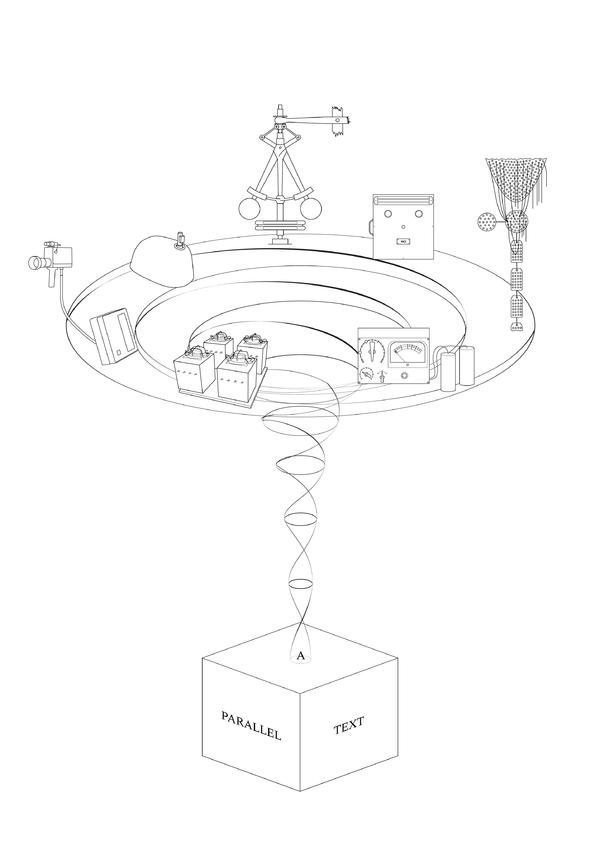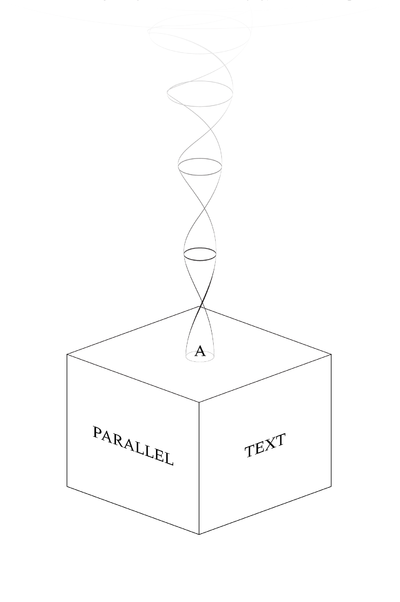Notes on Method: Difference between revisions
| Line 6: | Line 6: | ||
Cybernetics was practiced and theorised in a number of research cultures, to begin with principally for the U. S. military in the 1930s and 40s, and later in a wide variety of contexts. Post WWII, cybernetic ideas impacted society on all levels, politically, culturally, militarily, scientifically, even as its institutional presence dissipated at the end of the 1960s. | Cybernetics was practiced and theorised in a number of research cultures, to begin with principally for the U. S. military in the 1930s and 40s, and later in a wide variety of contexts. Post WWII, cybernetic ideas impacted society on all levels, politically, culturally, militarily, scientifically, even as its institutional presence dissipated at the end of the 1960s. | ||
The key principles outlined in Behavior, Purpose and Teleology by Arturo Rosenblueth, Norbert Wiener and Julian Bigelow (1942) and A Logical Calculus of the Ideas Immanent in Nervous Activity by Warren McCulloch and Walter Pitts (1943), along with the information theory of Claude Shannon (1947) provided a frame that allowed for the equivalence between mechanical and biological systems. The first cybernetic creatures, self-organised and adapted to their environment, providing models for the workings of the nervous system of animals and humans. If behaviour in both animal and machine is regulated by information flows through a circuit, both might also be understood as ordered through stochastic processes, performing computational acts. This was understood as an expression of negative entropy. | The key principles outlined in Behavior, Purpose and Teleology by Arturo Rosenblueth, Norbert Wiener and Julian Bigelow (1942) and A Logical Calculus of the Ideas Immanent in Nervous Activity by Warren McCulloch and Walter Pitts (1943), along with the information theory of Claude Shannon (1947) provided a frame that allowed for the equivalence between mechanical and biological systems. | ||
The first cybernetic creatures (such as those built by Grey Walter and Ross Ashby), self-organised and adapted to their environment, providing models for the workings of the nervous system of animals and humans. If behaviour in both animal and machine is regulated by information flows through a circuit, both might also be understood as ordered through stochastic processes, performing computational acts. This was understood as an expression of negative entropy. | |||
The texts examined in The Fabulous Loop de Loop contributed to the constitution of a new discourse which sought to accommodate the implications of an epistemology of circular causality: Lacan to psychoanalysis; Burroughs to literature; the Radical Software group to art and (media) ecology. This epistemological shift did not come over night, I also examine the development of this discourse from the nineteenth century with reading of the work of Samual Butler and, as we approach the era of cybernetics, the work of William Bateson and Kenneth Craik, who prepare the ground for a group of thinkers who were central to the development of a discourse on cybernetics in the middle of the twentieth century. | The texts examined in The Fabulous Loop de Loop contributed to the constitution of a new discourse which sought to accommodate the implications of an epistemology of circular causality: Lacan to psychoanalysis; Burroughs to literature; the Radical Software group to art and (media) ecology. This epistemological shift did not come over night, I also examine the development of this discourse from the nineteenth century with reading of the work of Samual Butler and, as we approach the era of cybernetics, the work of William Bateson and Kenneth Craik, who prepare the ground for a group of thinkers who were central to the development of a discourse on cybernetics in the middle of the twentieth century. | ||
Revision as of 12:36, 9 November 2020

THE FABULOUS LOOP de LOOP
Cybernetics, in its contemporary sense, came into existence when the traditional notion of feedback loops, which has its origins in engineering (as performed by Ktesibios’ water clock or Watt’s steam engine) was bound to the modern concept of information (that the meaning and context of a message are not connected and that information can be measured in a binary unit). The two disciplines were later brought together into the term Information Theory and were simultaneously theorised by Norbert Wiener and Claude Shannon.
Cybernetics was practiced and theorised in a number of research cultures, to begin with principally for the U. S. military in the 1930s and 40s, and later in a wide variety of contexts. Post WWII, cybernetic ideas impacted society on all levels, politically, culturally, militarily, scientifically, even as its institutional presence dissipated at the end of the 1960s.
The key principles outlined in Behavior, Purpose and Teleology by Arturo Rosenblueth, Norbert Wiener and Julian Bigelow (1942) and A Logical Calculus of the Ideas Immanent in Nervous Activity by Warren McCulloch and Walter Pitts (1943), along with the information theory of Claude Shannon (1947) provided a frame that allowed for the equivalence between mechanical and biological systems.
The first cybernetic creatures (such as those built by Grey Walter and Ross Ashby), self-organised and adapted to their environment, providing models for the workings of the nervous system of animals and humans. If behaviour in both animal and machine is regulated by information flows through a circuit, both might also be understood as ordered through stochastic processes, performing computational acts. This was understood as an expression of negative entropy.
The texts examined in The Fabulous Loop de Loop contributed to the constitution of a new discourse which sought to accommodate the implications of an epistemology of circular causality: Lacan to psychoanalysis; Burroughs to literature; the Radical Software group to art and (media) ecology. This epistemological shift did not come over night, I also examine the development of this discourse from the nineteenth century with reading of the work of Samual Butler and, as we approach the era of cybernetics, the work of William Bateson and Kenneth Craik, who prepare the ground for a group of thinkers who were central to the development of a discourse on cybernetics in the middle of the twentieth century.
The polymath Gregory Bateson wrote in parallel with many of these thinkers. Bateson was a central figure in realizing the Macy Conferences on cybernetics (1946-1953). He was a central figure in reforms to psychiatric practice in the 1950s and was a central intellectual force within the ecology and counterculture movements of the 1960s and 1970s. Throughout his career Bateson developed an holistic cybernetic epistemology. Key texts by Bateson, dating from the mid 1930s to the 1970s, will be held as companion stars to the authors listed above. I aim to provide a very slim cross section which describes the institution of a broader cybernetic discourse.
This text is concerned with the way ideas can travel from one discursive space to another. Bateson displays the protean nature of cybernetic ideas more effectively than any other thinker. Bateson repeatedly draws our attention to an “outmoded epistemology” in which the nineteenth century energy model reaches the point of exhaustion. This must be replaced by an “ecology of mind” in which negative entropy is the central agent, in which individual choice provides “the difference that makes a difference”. Bateson transits from one epistemological sphere to another without significant violence to reason.
STRUCTURE OF THE TEXT
The Fabulous Loop de Loop comprises nineteen chapters. Each chapter examines attempts – from the 1870s to the 1970s – to narrate a new system of knowledge in which the discourse of energy is replaced by the discourse of information.
Central to cybernetics was a reassessment of how change and adaptation occur across a wide variety of disciplines such as physics, biology, evolution and ecology. This re-evaluation also reached deep into the humanities, making claims on the discourses of anthropology, psychology, psychoanalysis, aesthetics and sociology.
I use the term “a” cybernetic discourse to make clear that The Fabulous Loop de Loop describes the site of an epistemological struggle. The term “cybernetics” is far from stable. In The Fabulous Loop de Loop we will see how different thinkers draw on different elements of the past to establish new foundations and project into different imagined futures.
The Fabulous Loop de Loop explores this contested space through seven “feedback machines”. Each machine expresses negative entropy – in so far as they take information from their environment in order to adjust and adapt. The examination of these machines leads us to texts by writers who struggle with the implications of this epistemological shift (from the speculative theories of Samuel Butler, through the “new” psychanalysis of Jacques Lacan, to the countercultures of William Burroughs and video activists Radical Software).
The Fabulous Loop de Loop is built from these elements:
A PARALLEL TEXT
A Parallel Text runs throughout the The Fabulous Loop de Loop. The text helps situate the The Fabulous Loop de Loop within a broader historical and critical context. The Parallel Text comprises annotations, essays, commentary, synopses, reflections, notes on methodology and extracts of other texts which have a direct relation to The Fabulous Loop de Loop. Links to A Parallel Text are provided in the margins of The Fabulous Loop de Loop.
